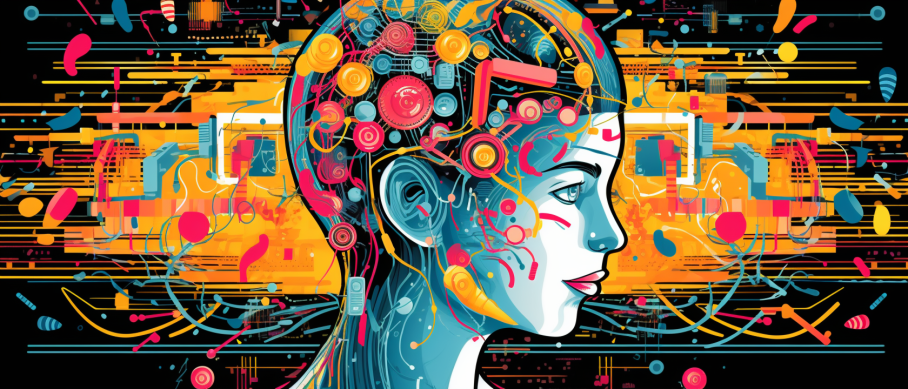Key Takeaways
✅ Layered Architecture: At the heart of Deep Learning and neural networks lies a beautifully complex layered architecture. These layers, kind of like the floors in a skyscraper, each play their part in digesting huge datasets, spotting patterns you or I might miss on the first—or even fiftieth!—glance. Think of it as teaching a computer to find a needle in a digital haystack, getting better as the hay grows.
✅ Automatic Feature Extraction: Imagine having a brilliant assistant who prepares all your data so you can focus on the real work. That's what Deep Learning does—it sorts through raw data, pinpointing the golden nuggets that matter, no manual work needed. This means you can kick back and relax, well, at least when it comes to sifting through endless data points.
✅ Improved Performance with Large Datasets: Ever wondered how some digital brains get smarter with more homework? Neural networks thrive on gobbling up tons of data. The more they munch, the smarter they get, especially for complex tasks like understanding pictures, recognizing voices, or even predicting the future. Think big data buffet for brainy algorithms, where more is always merrier.
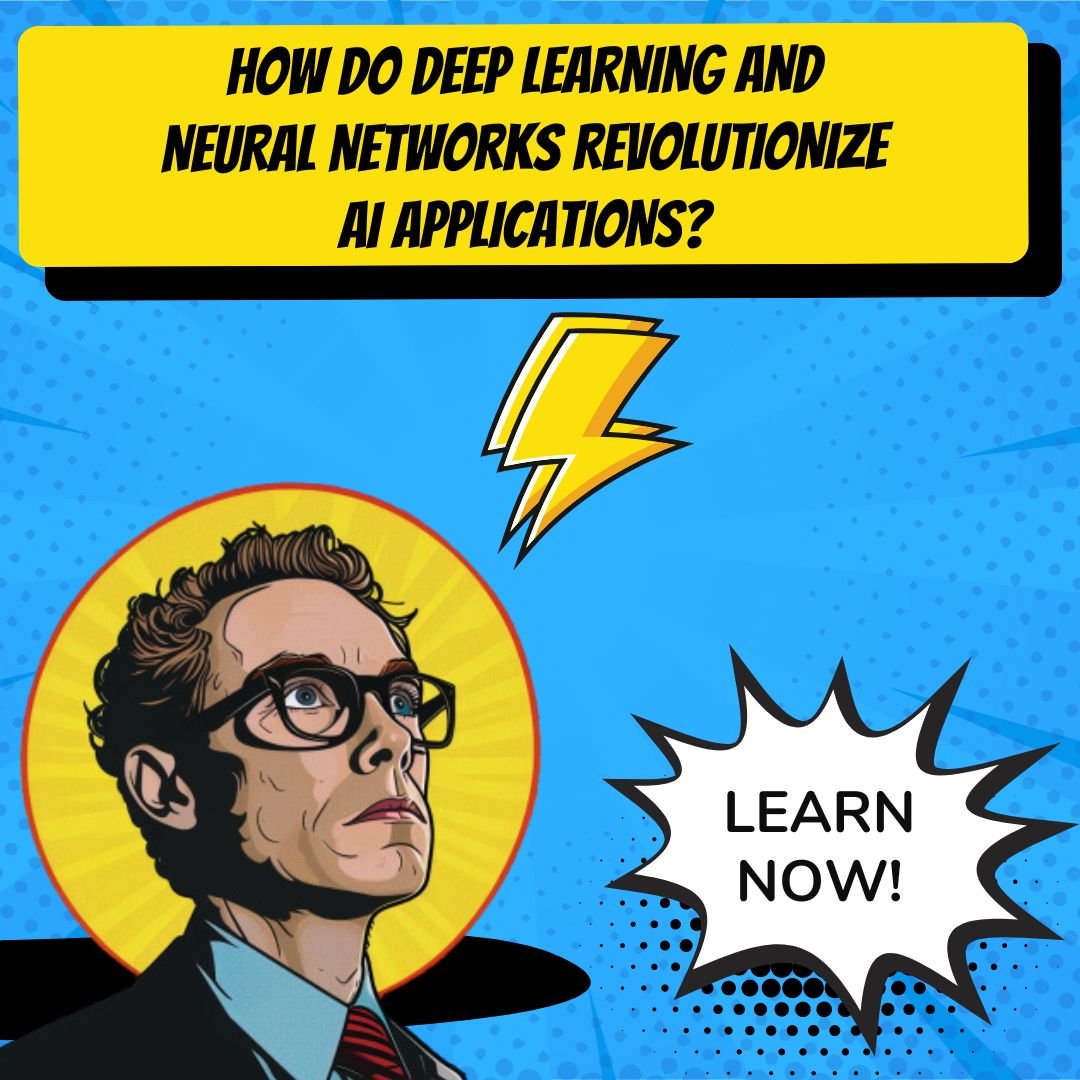
Introduction
Baffled by how computers are starting to recognize faces, translate languages, and even drive cars? At the forefront of this mind-boggling tech evolution are Deep Learning and Neural Networks, two titans in the progressive world of Advanced AI Techniques. These aren't just buzzwords; they're revolutionizing how machines solve complex tasks, tasks once thought the exclusive territory of human brains.
Deep Learning is not science fiction anymore—it's science fact. And it's a game-changer. From the algorithms suggesting your next favorite movie to virtual assistants getting your coffee order just right, these technologies are shaping our future. Curious about how this all works and why it's so powerful? You're about to find out.
But wait, there's more. This isn't just another tech talk; it's a journey through the inner workings of a digital revolution. We'll explore how these technologies don't just mimic the human brain but often surpass it in efficiency and accuracy. We'll unveil how mastering neural networks could be your golden ticket to maximizing revenue, ROAS, or ROI.
Stay tuned for some groundbreaking insights—get ready to have the curtain lifted on the secrets of Deep Learning and Neural Networks. Welcome to your blueprint for tech success. Welcome to the future!
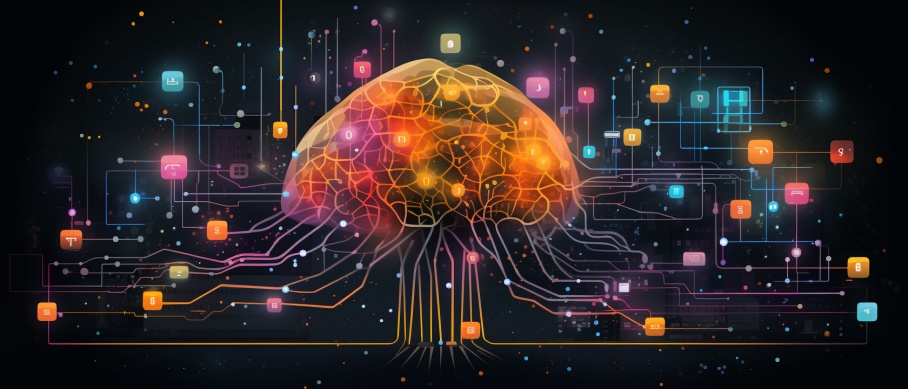
Top Statistics
| Statistic | Insight |
|---|---|
| Global Deep Learning Market Size: Expected to grow from $11.15 billion in 2021 to $18.12 billion by 2026, at a CAGR of 12.3%. (Source: MarketsandMarkets, 2021) | This notable growth trajectory suggests that businesses across various sectors are eager to harness the power of deep learning technologies. |
| Highest Deep Learning CAGR: The healthcare sector with an expected growth rate of 13.9% from 2021 to 2026. (Source: MarketsandMarkets, 2021) | With such growth, healthcare services are on the verge of a revolution, driven by deep learning's capabilities in analytics and diagnostics. |
| Deep Learning Experts: The United States, China, and India are the top three countries with the most deep learning and neural networks experts. (Source: Analytics India Magazine, 2021) | Geographical insights like this point businesses and academics towards potential hotspots for talent and innovation in the field. |
| Global AI Market Growth: Projected to grow from $40.2 billion in 2021 to $554.3 billion by 2027, at a CAGR of 40.2%. (Source: Fortune Business Insights, 2021) | Such explosive growth forecasts illustrate the vast potential and rapid acceleration of AI technologies, which businesses can't afford to ignore. |
| Adoption in New Industries: Expected to increase in manufacturing, agriculture, and transportation. (Source: Gartner, 2021) | This diversification into various industries underlines the universal applicability and promise of deep learning to solve complex problems beyond the tech sphere. |
A Look Into Deep Learning and Neural Networks
So, what is deep learning, and how do these neural networks we hear so much about actually work? Imagine deep learning as a brilliant mimic, getting inspiration from the human brain. These networks consist of layers upon layers of nodes, or 'neurons', much like our neural pathways. When these neurons work together, they can recognize patterns, translate languages, and even help cars drive themselves.

Consider how we as humans learn; it’s never from just one event, right? We learn from repetition and patterns, strengthening our understanding over time. That's the essence of neural networks—they require training with data to begin making sense of it. The real magic happens as you pile up those layers, allowing them to identify complex patterns. The more layers, the deeper the learning, hence the term "deep learning."
Charting the Course Through Neural Network Structure
Diving into the anatomy of a neural network, we have the input layer, hidden layers, and the output layer. It's in the 'hidden' bits where the magic happens. Here, raw data is progressively refined through layers to yield an answer or prediction at the end.
But not all neural networks are alike. There's a variety: feedforward networks pass information one way, whereas convolutional neural networks are ace at handling images. Then there are recurrent neural networks, which rock at sequential data like language because they remember previous inputs. Each type has its unique structure suited for different problems, similar to using different tools for building a birdhouse versus a full-fledged house.
Deep Learning: Unleashing the Potential of Stacked Layers
Have you ever wondered why deep learning is a big deal? It shines by stacking layers in a neural network to an extent where traditional machine learning says 'no more.' This layered approach allows the model to learn from a colossal amount of data. It's all about refinement at each step, fine-tuning the outputs to be more precise.
As these layers increase, networks can capture not just the direct patterns but also nuances and subtleties in the data. Imagine peeling an onion; with every layer, you get closer to its core—the essence of the data. From self-driving cars to virtual assistants, the scope of deep learning applications is just incredible.
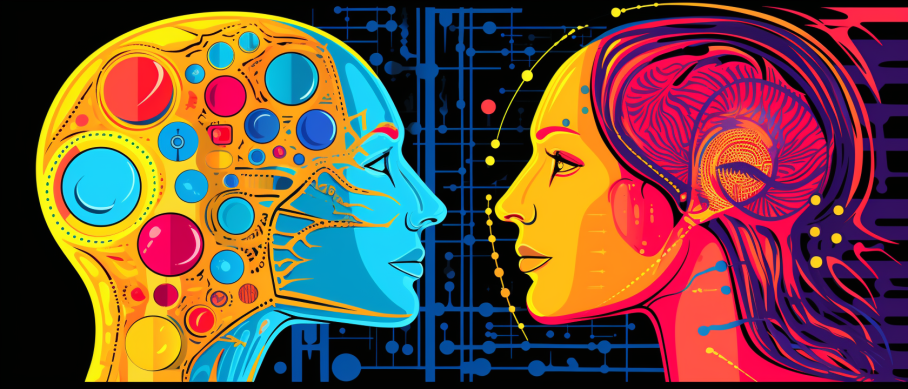
The Nuts and Bolts of Training Deep Learning Models
How do you get a computer to understand pictures or predict the stock market? It all spins around training. But not just your run-of-the-mill study session—this is where supervised learning, unsupervised learning, and reinforcement learning enter the chat.
Then, to perfect these models, you have got all sorts of optimization algorithms. Algorithms like stochastic gradient descent and Adam are akin to guiding stars that lead the model in the right direction. Training becomes an art and a science, ensuring that every neuron plays its part without any glitch, using tricks like batch normalization and dropout.
The Real-World Magic of Deep Learning Applications
It's not all academic; deep learning's got real chops in the real world. Take computer vision; thanks to these models, machines can identify objects in images better than a toddler.
Ever chatted with a bot and wondered how it kinda gets you? That's natural language processing and speech recognition—two other areas where deep learning excels. Whether it's forecasting the next market crash or pinpointing unusual activities in financial logs, the applications are as varied as they are impactful.
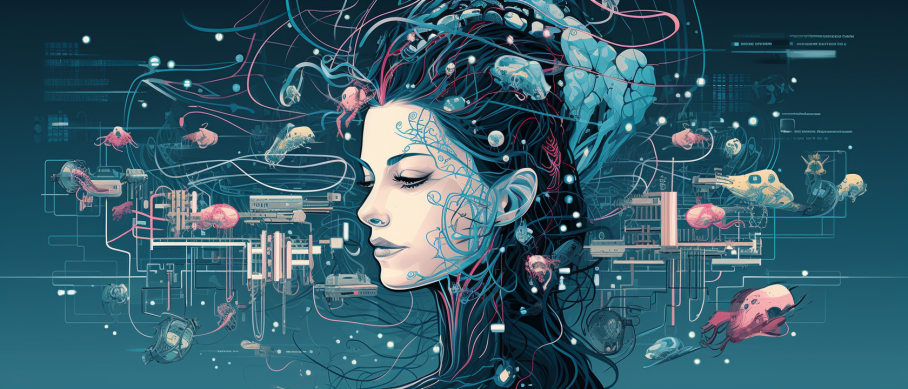
Tackling Roadblocks in the Journey of Deep Learning
Sure, deep learning is cool, but it's not all smooth sailing. Overfitting is like memorizing an answer without understanding the question—useless. And vanishing gradients? That's when the learning process stalls, like a car out of gas. Then there's the challenge of not having enough quality data.
The future's looking bright, though, with new methods popping up, such as generative models and adversarial training. And with the power comes responsibility—ethical AI is the beacon guiding this ship, making sure that as we advance, we do it the right way.
Onward We Go: Deep Learning's Expanding Horizon
Deep learning and neural networks extend an invitation to push boundaries. They are not only powerful tools but also gateways to a future where technology is more intuitive, helpful, and profoundly integrated into our daily lives. As the torchbearers of this tech frontier, we're encouraged to dig deeper, stay curious, and keep up with an ever-evolving landscape that's ripe with opportunities for those eager to learn and adapt.
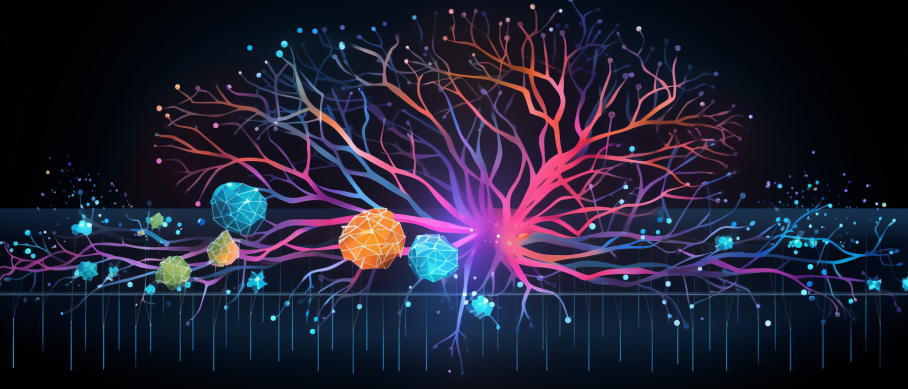
AI Marketing Engineers Recommendation
Recommendation 1: Implement Deep Learning for Enhanced Customer Insights: Most of you have probably heard about big data and how it can give us a peek into what folks really want; it's like reading their minds, isn't it? Now, let’s kick it up a notch with Deep Learning. This isn't just about understanding who clicked where. It’s about predicting the next big wave of consumer behavior. Imagine knowing what your customers will crave before they do – by harnessing the power of deep learning to analyze patterns hidden deep within chunks of data. To put this into action, start by identifying the key data points relevant to your customer base and incorporate deep learning algorithms to process this information, revealing trends that can inform product development and marketing strategies.
Recommendation 2: Leverage Neural Networks to Create Hyper-Personalized Experiences: You've seen personalized ads and product recommendations, right? But how do we make them even more spot on? That’s where Neural Networks come into the play, analyzing tons of data points to make sure your brand connects with each individual on a personal level. For those who’ve got a knack for always hitting the bullseye with their messaging, this could be your secret weapon. By tapping into current trends such as hyper-personalization, you could use neural network-driven insights to precisely tailor marketing campaigns that resonate with individual preferences, increasing engagement and loyalty. If you're not already using a platform that can do this, it's time to start looking.
Recommendation 3: Harness AI Tools for Real-time Decision Making: - Okay, who wouldn't want to make smarter decisions faster? Deep Learning and Neural Networks aren't just for show – they're about getting you to make the best call at the right time. By using AI-powered tools, you can analyze live data and respond immediately to changing market dynamics. This means you can adjust your tactics on-the-fly and stay ahead of the curve. This could look like real-time pricing adjustments, instant personalized promotions, or content that changes based on current trends. Check out tools such as Google's AutoML or IBM Watson to get started; they’re both tailored for businesses wanting to get serious with AI without needing a team of expert coders.
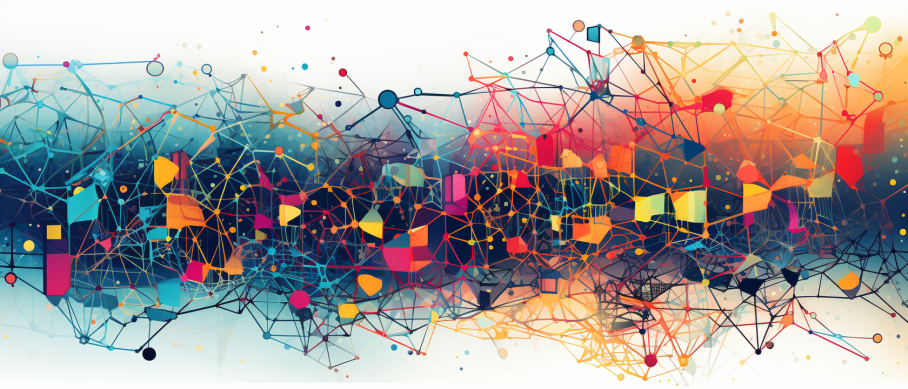
Relevant Links
Unlock the Secrets of Affiliate Marketing: Your Path to Passive Income in 2024
Choosing Your ChatGPT: A Detailed Comparison of Free vs Paid Versions
Revolutionize Your Content Game with ChatGPT: The Modern Marketer’s Creative Ally
The Art of Prompt Engineering: Refine Your Chatbot Skills for Expert Interaction
Supercharge Your Small Business: Growth Secrets Unleashed with ChatGPT
Stay Ahead: Top 10 Digital Marketing Trends Defining 2024
Revolutionize Your Google Ads: High-Converting Texts Crafted by AI
Ethical AI in Marketing: Navigating the New Frontier Responsibly
AI Branding Evolution: How AI is Shaping Brand Strategy in the Digital Age
Unleashing AI in E-commerce: How to Optimize Personalization and Recommendations
AI's Predictive Power in Marketing: Shaping Strategies with Data-Driven Analytics
Creating Compelling Content with AI: Revolutionizing Marketing Optimization
Mobile Marketing in 2024: Enhancing Strategies and Campaigns with AI
Empower Your Marketing Plan: Strategies for Boosting Business Growth in 2024
Spotlight on Social Media: Elevate Your Brand with Next-Level Marketing Strategies
Mastering Marketing ROI: Performance Metrics for Calculating Your Success
Python Mastery for Data Analysis: Harness Python's Full Potential in Data Science
Understanding the Customer Journey: Mapping for Improved Experience and Loyalty
Discover PPC Strategies: Maximizing Success in Pay-Per-Click Campaigns
Navigate the Future with AI: How Technology Will Transform Your World in 100 Years
Conclusion
So, we've journeyed through the intricate world of deep learning and neural networks, unearthing the wonders they hold for solving complex tasks that seemed impenetrable not so long ago. From their roots as a spark of imagination to the robust engines powering today's AI revolutions, these advanced techniques stand as testaments to human ingenuity. Remember how neural networks mirror the brain's own network of neurons? That's the very foundation enabling machines to 'learn' from data in a way that mimics our own learning.
Deep learning, with its multi-layered approach, has pushed the boundaries further, offering practical solutions in fields like computer vision and natural language processing. Think about it: isn't it fascinating that a machine can now recognize images or understand speech, often with precision that rivals our own? But it's not just about mimicking humans—it's about augmenting our capabilities and taking on challenges we can't manage alone.
Of course, we can't ignore the growing pains—overfitting, data scarcity, vanishing gradients. Yet, even here, we see progress. New techniques and ethical considerations emerge, shaping a responsible future for AI. Challenges and Future Directions in Deep Learning keep us mindful of the journey ahead.
Are you now seeing the implications for the future? Are we poised on the brink of an AI-led era where every complex task becomes more manageable, more precise, and perhaps, even more humane? The possibilities are immense, the potential is staggering, and the future is ours to shape. Stay curious, keep learning, and maybe you'll be part of the next groundbreaking discovery in this ever-evolving field of AI. What will your role be in this transformative journey?
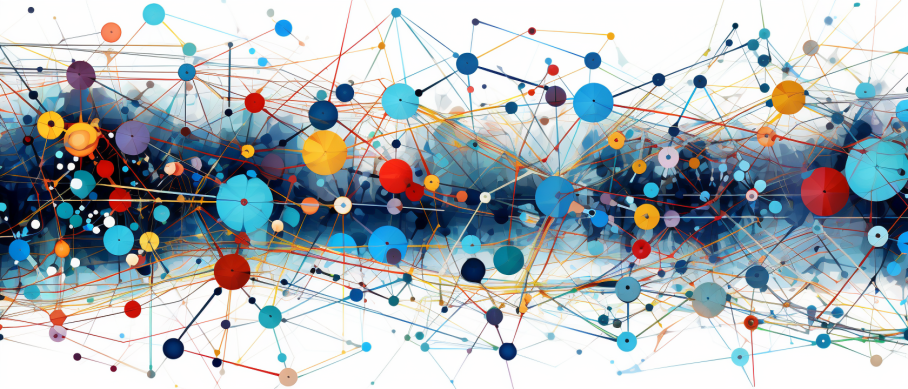
FAQs
Question 1: What is Deep Learning?
Answer: Deep Learning is a subset of machine learning that employs multi-layered neural networks to understand and predict from complex datasets, emulating the human brain's structure and functions to achieve remarkable accuracy.
Question 2: What are Neural Networks?
Answer: Neural Networks are a family of algorithms that pick up on patterns and use those patterns to make decisions. Picture a web of nodes working together, layer by layer, to process data and spit out an outcome you're looking for.
Question 3: What's the difference between Deep Learning and Machine Learning?
Answer: Think of Deep Learning as the specialized wizard in the Machine Learning realm, using intricate neural nets to handle intense data. Machine Learning is the broader kingdom, with a variety of strategies for teaching computers to learn from data without direct programming.
Question 4: How do Deep Learning and Neural Networks function?
Answer: Both work by data flowing through layers, each processing and nudging it along to the next station until the final answer pops out. They learn as they go, tweaking how they interpret the data, aiming to get better at predicting what you want them to.
Question 5: What are the perks of Deep Learning and Neural Networks?
Answer: They can chew through crazy complicated data, manage massive datasets, and they're quite the whizzes at making good guesses even when the data you've got is messy or missing bits. They shine in areas like seeing and understanding pictures, figuring out human speech, and forecasting trends.
Question 6: What are the hurdles with Deep Learning and Neural Networks?
Answer: You need lots and lots of data, horsepower in the computer department, and sometimes their thought process can be a mystery. They can also get a bit too obsessed with the data they've seen, messing up predictions for new data that comes their way.
Question 7: Where do Deep Learning and Neural Networks show their magic?
Answer: They're pretty versatile, tackling things like recognizing faces or voices, understanding and translating languages, sniffing out fraud, predicting machine failures, and they're making waves in healthcare, economics, and getting us from A to B.
Question 8: What are the cutting-edge subjects in Deep Learning and Neural Networks?
Answer: The frontier's got some cool stuff like transfer learning (teaching a system something new based on what it already knows), GANs (where two networks spar to create new, synthetic data that's incredibly real), learning by a reward system, and networks that remember sequential data.
Question 9: How can someone dive into Deep Learning and Neural Networks?
Answer: Start by getting the lay of the land in machine learning and coding basics. Lots of online resources and communities are there to guide you. Then, grab open-source tools like TensorFlow or Keras, and start tinkering to build your own neural nets.
Question 10: Any top tips for handling Deep Learning and Neural Networks?
Answer: Clean your data well, pick the right architecture for your neural network, use techniques to keep your model from just memorizing the dataset, and constantly check how your model's doing. Oh, and share what you learn – it's all about growing the knowledge pool together.
Academic References
- Goodfellow, I., Bengio, Y., & Courville, A. (2016). Deep Learning. MIT Press. This comprehensive book provides a thorough introduction to deep learning and neural networks, covering topics such as supervised and unsupervised learning, convolutional networks, and recurrent neural networks. Essential contributions include a detailed overview of the mathematical foundations and practical applications of deep learning in various fields.
- Nielsen, M. (2015). Neural Networks and Deep Learning. Determination Press. This online book offers a practical and accessible guide to understanding neural networks and deep learning, exploring fundamental concepts, algorithms, and applications like backpropagation, gradient descent, and convolutional networks. It stands out for its clear and concise explanation of complex topics and the use of numerous examples to reinforce understanding.
- He, K., Zhang, X., Ren, S., & Sun, J. (2016). Deep Residual Learning for Image Recognition. In Proceedings of the IEEE Conference on Computer Vision and Pattern Recognition (pp. 770-778). The authors set a new precedent by introducing the concept of residual learning to train very deep neural networks, leading to the development of the influential residual networks (ResNets). Their application to image recognition tasks resulted in state-of-the-art performance on the ImageNet dataset.
- Vaswani, A., Shazeer, N., Parmar, N., Uszkoreit, J., Jones, L., Gomez, A.N., Kaiser, Ł., & Polosukhin, I. (2017). Attention is All You Need. In Advances in Neural Information Processing Systems (pp. 5998-6008). This influential paper proposes the revolutionary Transformer architecture, which dispenses with recurrent neural networks and convolutional neural networks in favor of self-attention mechanisms, significantly improving the efficiency and power of models for natural language processing tasks.
- Goodfellow, I., Pouget-Abadie, J., Mirza, M., Xu, B., Warde-Farley, D., Ozair, S., … & Bengio, Y. (2014). Generative Adversarial Nets. In Advances in Neural Information Processing Systems (pp. 2672-2680). Introducing Generative Adversarial Networks (GANs), this paper sparked a new wave of research into generative modeling. The key contribution being the innovative approach of pitting a generator against a discriminator, enabling the generation of highly realistic synthetic data.

